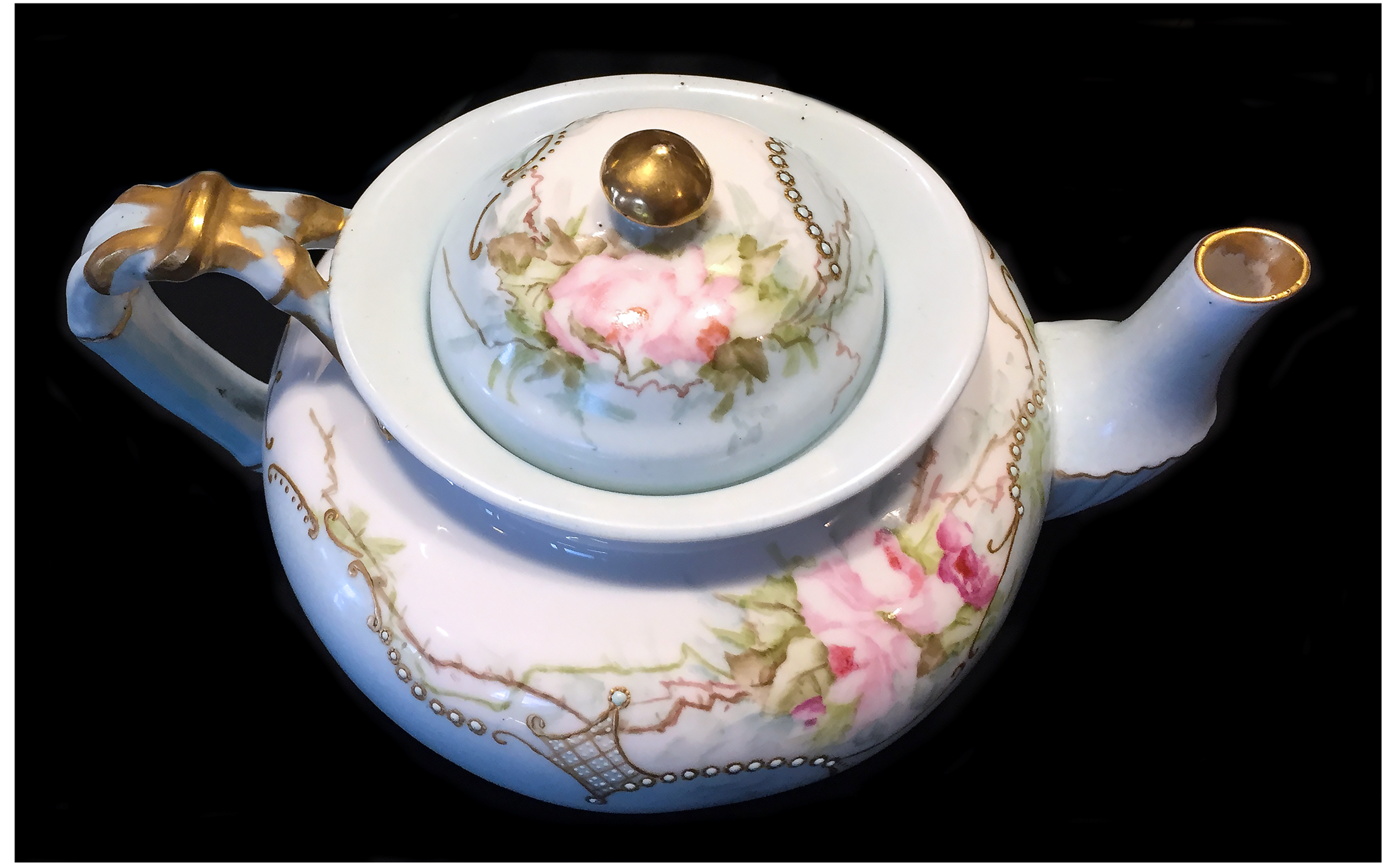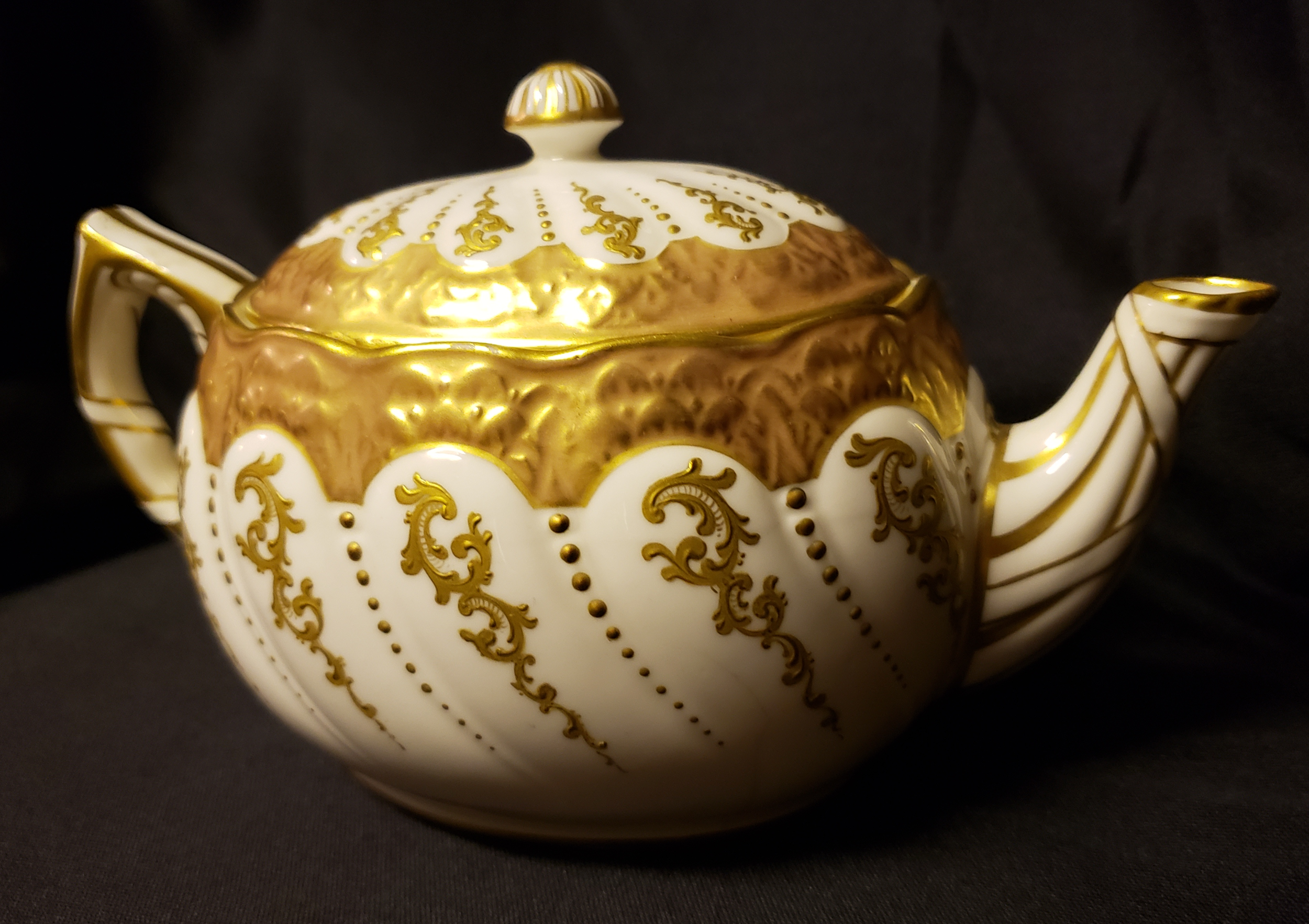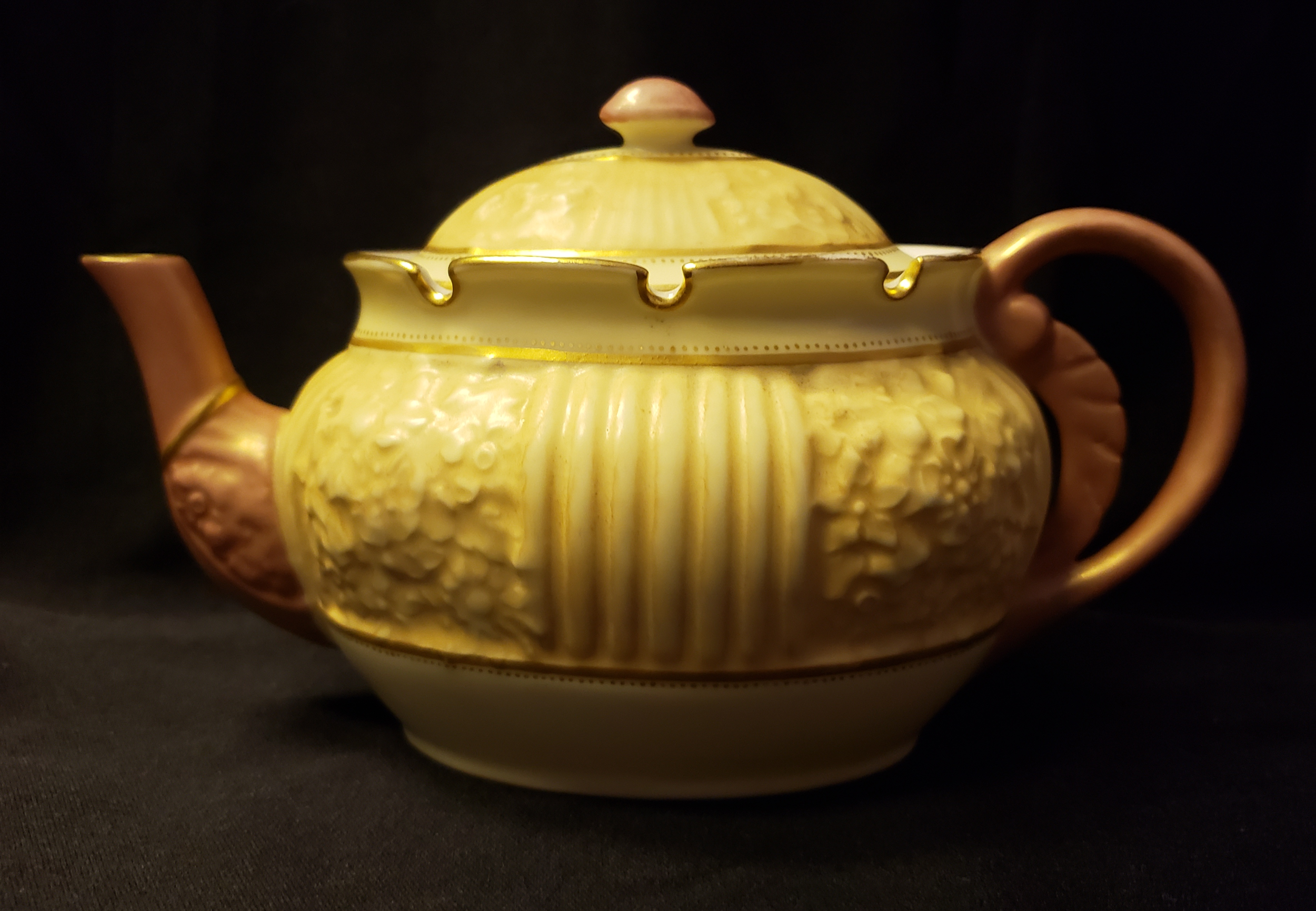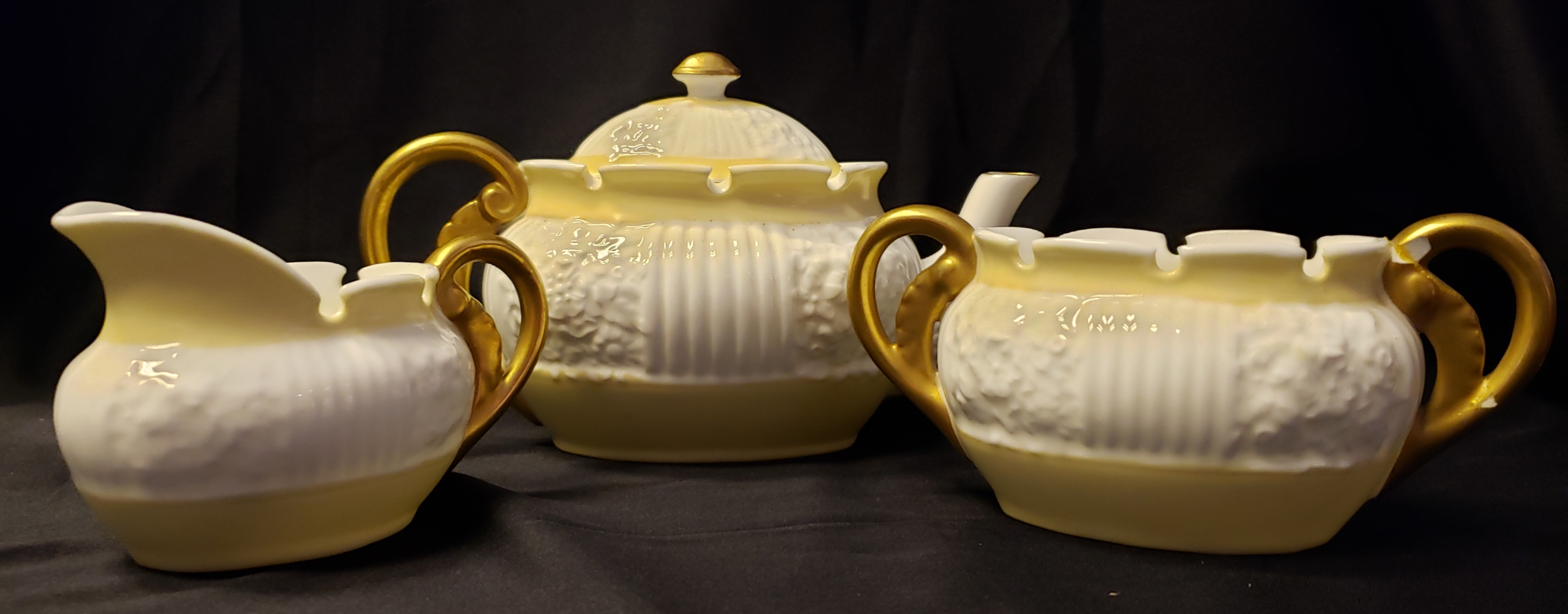Lotus Ware
Knowles, Taylor and Knowles
At the end of the 19th century, American ceramics and wares were recognized by most as of similar or better quality than their English and French competitors. However, the production of the delicate, high quality, durable, bone china produced in Europe had not truly been investigated by American potters. Knowles, Taylor & Knowles’ first attempt was to produce Belleek. From Belleek they moved to what they would call Lotus Ware. Joshua Poole, an Irish potter is credited with the formulation of American Belleek and Lotus ware. (Kearns, 1994).
NAME: Globe
MAKER: Knowles, Taylor & Knowles
DATE: 1892-1896
COLLECTION: Museum of Ceramics/Ohio History Connection H2788
Tea set with hand painted floral design on light blue matte background.
NAME: Globe
MAKER: Knowles, Taylor & Knowles
DATE: 1892-1896
COLLECTION: Museum of Ceramics/Ohio History Connection H49503
Globe tea set with hand painted floral design and gold embellishments
After the Lotus ware was fired it was hand decorated in elaborate styles. It was often hand painted by factory artists but was also hand painted and decorated by artistic individuals who were not factory employees. Henry Schmidt, a German artist, was hired to design and decorate Lotus ware. The applied method of decoration is what can be seen here and on several other pieces in the exhibit. A clay like paste or glue was applied to the item and the filigree, fishnet or decoration was attached before the glaze and final firing. (Kearns, 1994).
NAME: Valenciennes
MAKER: Knowles, Taylor & Knowles
DATE: 1892-1896
COLLECTION: Museum of Ceramics/Ohio History Connection H2834 & H1373_001
When the Globe shape has an added fishnet applique, it becomes Valenciennes shape. The translucent white color produced in the first firing of the bone china was often maintained as the base for the ware and, after a glaze was added, left in the pure white form Colonel, John Taylor of the company presented the new china at the 1893 World’s Fair. Knowles, Taylor & Knowles won every award for fine porcelain.
NAME:
MAKER: Knowles, Taylor & Knowles
DATE: 1892-1896
COLLECTION: William and Donna Gray
A truly unique piece of Lotus ware! This shape does not appear in any of the K. T. & K. catalogs.
Bone China is made by the addition of bone ash to the porcelain base. English potters had been making fine bone china since 1750. The bone ash adds strength and produces the brilliant white color of the porcelain. (Kearns, 1994).
NAME: Davenport
MAKER: Knowles, Taylor & Knowles
DATE: 1892-1896
COLLECTION: Museum of Ceramics/Ohio History Connection H1331_001
Some believe that Isaac Knowles remarked that the white color of Lotus Ware was similar to the glossy petals of a lotus blossom. Others believe that the first decoration on the newly fired lotus ware were lotus blossoms. The Lotus blossom can be seen here, on the KTK Lotus ware mark, similar to a crown. (Gaston, 1996).
H 2782
H2803
Tea Trivia:
The Tea Girl of Hummingbird Lane is a 2017 best-selling novel by Lisa See. Although fiction, it provides a fascinating look at the tea industry in the high mountains of China in the late twentieth century. It is the story of Li-yan and her family and their lives as tea farmers. It is also a story of Puer tea; hand-picked from ancient trees, aged, and sold for exorbitant prices.
NAME: Venice
MAKER: Knowles, Taylor & Knowles
DATE: 1892-1896
COLLECTION: Museum of Ceramics/Ohio History Connection
A collection of Venice shape teapots and sets
Attributed to Joshua Poole H1381_001
H2928
H2929
Tea Recipe:
ICED GREEN TEA WITH MINT: In a mug, mix 2 teaspoons cinnamon with equal amount of water to form a paste. Add ¼ tsp vanilla. Boil 2 cups of water and allow to cool slightly. Place 2 Lipton mint green tea bags in the mug and pour water over. Brew for a few minutes and place in refrigerator until cool. Add juice of 1 orange to the brewed tea. Serve in ice filled glasses, garnished with orange slices. (Lipton).
NAME: Decorated Valenciennes
MAKER: Knowles, Taylor & Knowles
DATE: 1892-1896
COLLECTION: Marc and Cindy Hoffrichter
The production of Lotus ware ceased in 1896 due to production costs. Some, attribute the demise of Lotus ware to it’s being produced in kilns designed for utilitarian ware causing many firings to be unusable. Neighbors also complained of the smell caused by the grinding of the bone component.
























